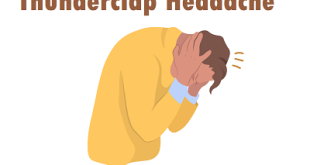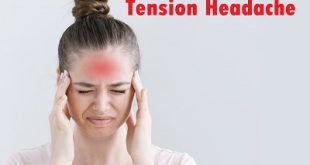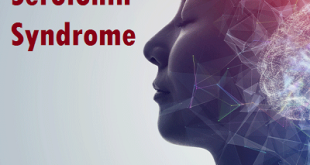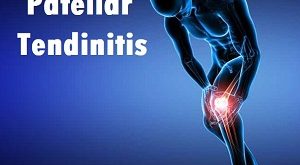What is Post-Concussion Syndrome (PCS)?
Post-Concussion Syndrome, or PCS, is the persistence of concussion symptoms beyond the normal course of recovery. The majority of concussion symptoms will resolve within about two weeks. In cases where symptoms last longer than one or two months, doctors may diagnose Post-Concussion Syndrome. Patients with PCS can experience concussion-like symptoms at rest or in response to too much physical or cognitive activity, often forcing them to withdraw from their usual physical, professional, and social lives.
Pathophysiology of Post-Concussion Syndrome
Debate in the literature exists over which symptoms of postconcussion syndrome are due to organic causes and which have a psychological basis. Researchers have hypothesized that early postconcussion syndrome symptoms are more likely to be organic, whereas PCS symptoms that persist beyond 3 months have a nonorganic, psychological basis. While recent research has shown that psychological factors may be present early, other studies using imaging techniques such as magnetic resonance imaging (MRI), single-photon emission computed tomography (SPECT), and magnetoencephalography (MEG) have demonstrated the presence of organic brain injury in patients with persistent PCS at greater than 1 year after injury.
Neuropsychological assessments have pointed toward an organic basis for some of the symptoms of postconcussion syndrome. Patients with PCS have been found to have cognitive deficits in memory, attention, and learning when compared with controls. A prospective study found impaired eye movements in patients with PCS, as compared to controls, that were both persistent and independent of factors such as depression or intellectual ability. Findings from neuropsychological evaluations demonstrate that symptom severity is not necessarily dependent on neurologic status immediately following injury. However, in other series, the length of LOC or posttraumatic amnesia may be correlated with the probability of developing PCS.
Some studies have found certain characteristics such as female sex, noise sensitivity, and anxiety predict development of symptoms. Another study found a simple test in the ED of immediate and delayed memory for 5 words and a VAS for acute headache provided an 80% sensitivity and 76% specificity for the development of PCS. In addition, another study found that higher educational levels, along with mild symptoms and no extracranial symptoms predicted a low likelihood of significant dysfunction from PCS.
What causes Post-Concussion Syndrome?
Concussions can occur in a variety of scenarios, including:
- Following a fall
- Being involved in car accident
- Being violently assaulted
- Experiencing a blow to the head during impact sports, particularly boxing and football
It isn’t known why some people develop PCS and others don’t.
The severity of the concussion or TBI plays no role in the likelihood of developing PCS.
Risk factors of Post-Concussion Syndrome
Risk factors for developing persistent post-concussive symptoms include:
- Age – Studies have found increasing age to be a risk factor for persistent post-concussive symptoms.
- Sex – Women are more likely to be diagnosed with persistent post-concussive symptoms, but this may be because women are generally more likely to seek medical care.
- Cause of Injury – Victims of an auto accident, motorcycle accident, falls, and assaults are more likely to suffer from post-concussion syndrome than those who suffer from sports-related concussions.
Symptoms and complications
- The symptoms of PCS can include: headaches
- Dizziness
- Fatigue
- Increased sensitivity to light
- Increased sensitivity to noise
- Irritability
- Changes in emotional state, such as becoming more susceptible to stress
- Depression
- Anxiety
- Difficulty concentrating
- Memory problems
- Difficulty sleeping
- Increased intolerance to alcohol
- Change in appetite
- Many of these symptoms overlap with those of other medical conditions, such as post-traumatic stress disorder and chronic pain.
- The exact reason why some people develop post-concussion syndrome after a blow to the head is not clear. There seems to be no correlation with the severity of the head injury.
How is Post-Concussion Syndrome Diagnosed?
Diagnosis of PCS is typically done by reviewing the patient’s history, physical tests, manual neurological and visual testing, vestibular tests, and ruling out other possible conditions. Here are some details of the most common post-concussion syndrome assessments.
Patient History
- How did the concussion occur?
- When did the symptoms start and how have they changed since then?
- If there was a loss of consciousness, for how long?
- Engage in a Dark Room Protocol or did you continue with all of your usual activities?
- Prior concussions and details?
- Other medical issues?
- What tests/exams have been conducted so far?
- What treatments have you tried or are currently undergoing?
Central Neurological Exam
- Tests for Cerebellar brain function
- Tests for Upper Motor Neuron function
- Cranial Nerve tests
Oculomotor Vision Tests
- Smooth Pursuit
- Saccades
- Convergence and Divergence
Orthopaedic / Physical Exam
- Cervical spine (neck) assessment
- Range of motion
- Strength
- Joint stability
- Treadmill cardiovascular stress testing
- Heart rate / blood pressure tests
Vestibular Tests
- Vestibular Ocular Reflex (VOR) tests
- Positional tests for BPPV
- Gait and Balance Assessments
- Infrared Goggle Nystagmus Tests
Nystagmus refers to the reflexive eye movements that occur with head movement and position changes. Abnormal nystagmus can be a sign of a vestibular impairment (the head movement sensing system), cerebellar and brain stem problems, and vision processing disorders. Nystagmus appears as repetitive flicking or beating movements of the eye (up, down, sideways and rotational).
Infrared google tests assess these patterns of eye movements to determine which areas of the brain may not be functioning properly.
SCAT-5?
The Sideline Concussion Assessment Tool is the most commonly administered test for sports related concussion. However this is a screening test rather than a true diagnostic test and it’s designed to be used for sports injuries and immediately following a concussion. Its usefulness as a concussion test decreases as time passes, losing effectiveness in as little as 3 days. It is NOT typically used for diagnosing Post-Concussion Syndrome.
X-Rays
Though uncommon, a small number of patients may have serious structural injuries to their neck (cervical spine) with a concussion. Those with significant neck pain, substantial loss of range of motion, or specific neurological signs may benefit from an X-ray.
MRI or CT Scans
The majority of MRIs and CT scans are negative for those with post-concussion syndrome. In those uncommon cases where head scans show changes in structure or scarring related to a brain injury, this information rarely helps to guide treatment. This is due to the individual differences between patients, and the unique brain stimulation that each person is exposed to each day. However, research in this area is moving quickly and there is strong potential for brain scans to be helpful in the assessment and treatment of PCS in the future.
When is an MRI / CT scan useful?
- They have little value when symptoms are relatively stable
- Are important if symptoms are rapidly increasing in the initial 3 days of concussion injury. Some worsening signs include: trouble speaking, difficulty coordinating movements of hands, fingers, feet, legs, unbearable headache, persistent vomiting, and vision loss.
- If severe symptoms persist well into weeks and months, to rule out a chronic subdermal hematoma (slow brain bleed).
What is the treatment for Post-Concussion Syndrome?
For most people, the symptoms of post-concussion syndrome usually improve and go away within three months after the initial blow to the head. Many find that having a diagnosis and an explanation for their symptoms helps.
There is no specific treatment that seems to speed up recovery. Any treatment that is given is aimed at relieving specific symptoms.
There are some things that you may find helpful if you have been diagnosed with post-concussion syndrome:
- Don’t rush back into things – it is generally advised that anyone who has had a head injury should take things slowly. If possible, try to return to your usual activities gradually after a head injury.
- Sleep hygiene – if you are having problems sleeping and are feeling very tired, try to stick to a regular schedule.
- Medication to help symptoms – your doctor may suggest some medication to help some of the symptoms of post-concussion syndrome that you may have. For example, painkillers for headache, medication to help with nausea symptoms or an antidepressant if you have symptoms of depression.
- Keep your stress levels down.
- Avoid alcohol and recreational drugs.
If your symptoms are prolonged or particularly troublesome, your doctor may suggest referral to a specialist used to dealing with problems related to head injury. This may be a neurologist, who specialises in problems of the nervous system, or a neuropsychiatrist or neuropsychologist, who specialises in problems relating to the brain and mental health, or a rehabilitation medicine specialist.
Prevention of Post-Concussion Syndrome
The only known way to prevent the development of persistent post-concussive symptoms is to avoid the head injury in the first place.
Avoiding head injuries
Although you can’t prepare for every potential situation, here are some tips for avoiding common causes of head injuries:
- Fasten your seat belt whenever you’re traveling in a car, and be sure children are in age-appropriate safety seats. Children under 13 are safest riding in the back seat, especially if your car has air bags.
- Use helmets whenever you or your children are bicycling, roller-skating, in-line skating, ice-skating, skiing, snowboarding, playing football, batting or running the bases in softball or baseball, skateboarding, or horseback riding. Wear a helmet when riding a motorcycle.
- Take action at home to prevent falls, such as removing small area rugs, improving lighting and installing handrails.
 Diseases Treatments Dictionary This is complete solution to read all diseases treatments Which covers Prevention, Causes, Symptoms, Medical Terms, Drugs, Prescription, Natural Remedies with cures and Treatments. Most of the common diseases were listed in names, split with categories.
Diseases Treatments Dictionary This is complete solution to read all diseases treatments Which covers Prevention, Causes, Symptoms, Medical Terms, Drugs, Prescription, Natural Remedies with cures and Treatments. Most of the common diseases were listed in names, split with categories.








500